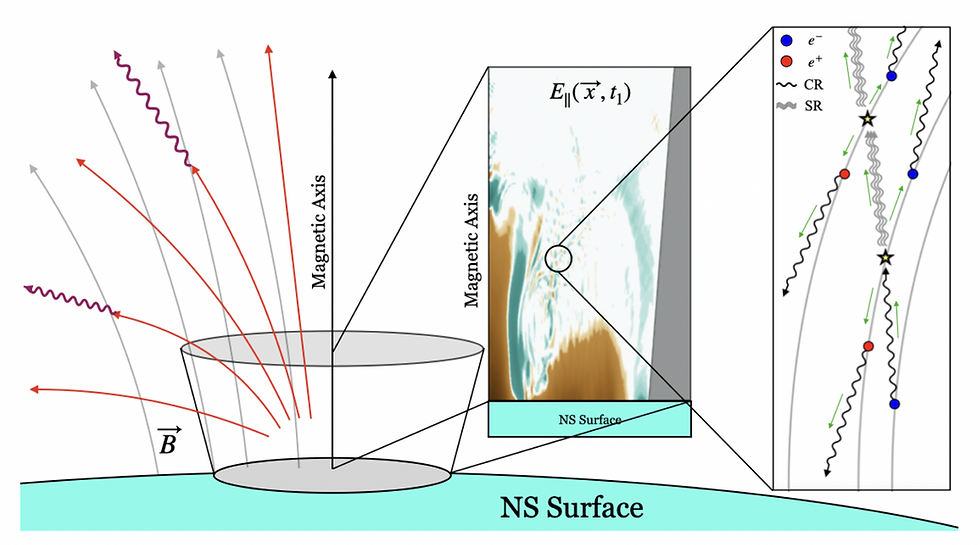Warm dark matter mass from strong lensing images with TMNRE
- Christoph Weniger
- Nov 3, 2022
- 1 min read
Authors: Noemi Anau Montel, Adam Coogan, Camila Correa, Konstantin Karchev, Christoph Weniger

Precision analysis of galaxy-galaxy strong gravitational lensing images provides a unique way of characterizing small-scale dark matter halos, and could allow us to uncover the fundamental properties of dark matter's constituents. In recent years, gravitational imaging techniques made it possible to detect a few heavy subhalos. However, gravitational lenses contain numerous subhalos and line-of-sight halos, whose subtle imprint is extremely difficult to detect individually. Existing methods for marginalizing over this large population of sub-threshold perturbers in order to infer population-level parameters are typically computationally expensive, or require compressing observations into hand-crafted summary statistics, such as a power spectrum of residuals. In this work we present the first analysis pipeline to combine parametric lensing models and a recently-developed neural simulation-based inference technique called truncated marginal neural ratio estimation (TMNRE) to constrain the warm dark matter halo mass function cutoff scale directly from multiple lensing images. Through a proof-of-concept application to simulated data, we show that our approach enables empirically testable inference of the dark matter cutoff mass through marginalization over a large population of realistic perturbers that would be undetectable on their own, and over lens and source parameters uncertainties. To obtain our results, we combine the signal contained in a set of images with Hubble Space Telescope resolution. Our results suggest that TMNRE can be a powerful approach to put tight constraints on the mass of warm dark matter in the multi-keV regime, which will be relevant both for existing lensing data and in the large sample of lenses that will be delivered by near-future telescopes.
Full paper: https://arxiv.org/abs/2205.09126


Comments